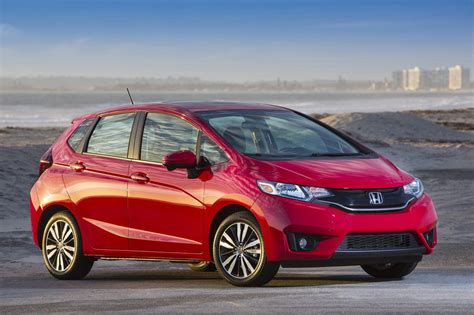Are you curious to know if a Palisade is bigger than a Traverse? You’ve come to the right place. We’ll answer this question and so much more in this article.
The Palisade and Traverse are both full-size SUVs from Hyundai and Chevrolet, respectively. Both have three-row seating, with the third row being optional in the Traverse. The Palisade is larger than the Traverse in terms of overall length and width.
When it comes to interior room, the Palisade has more headroom and legroom for front and rear passengers. The Palisade also offers more cargo space than the Traverse, with 86.4 cubic feet with the rear seats folded down, compared to the Traverse’s 78.7 cubic feet.
The Palisade is powered by a 3.8-liter V6 engine that produces 291 hp and 262 lb-ft of torque. It’s mated to an eight-speed automatic transmission. The Traverse, meanwhile, is powered by a 3.6-liter V6 engine with 310 hp and 266 lb-ft of torque. It’s paired with a nine-speed automatic transmission.
The Palisade has a starting price of $30,550, while the Traverse’s base model starts at $30,995. Both SUVs come with a variety of features, such as Apple CarPlay and Android Auto, a power liftgate, and a rearview camera.
So, the answer to the question “Is a Palisade bigger than a Traverse?” is yes. The Palisade is larger in terms of exterior dimensions, offers more interior room, and has a more powerful engine. The Traverse, however, is slightly less expensive, and offers a few extra features.
Understanding The Difference Between A Palisade And Traverse
When it comes to understanding the difference between a palisade and a traverse, it’s important to recognize the unique characteristics of each. While both types of fencing are used for a variety of purposes, their differences could be the deciding factor in which type of fencing you choose for your property.
A palisade is a type of fencing that is usually made from steel or wood and consists of vertical posts that are connected at the top by a horizontal rail. This type of fencing is often used to secure large areas and is often seen near industrial sites or warehouses. Palisades are also commonly used to secure the perimeter of government buildings and schools. Palisades are more expensive than other types of fencing, but they are extremely durable and can withstand extreme weather conditions.
A traverse, on the other hand, is a type of fencing that is constructed using a combination of horizontal and vertical boards. Traverses are generally used for decorative purposes, but they can also be used for security. Traverses are usually made from wood or vinyl, and they are more affordable than palisade fencing. Traverses are also less durable than palisades, but they provide more flexibility in terms of design.
When it comes to deciding between a palisade and a traverse, it’s important to consider your budget and the purpose of the fencing. Palisades are more expensive, but they provide more security and durability. Traverses are more affordable, but they are not as secure and durable. Ultimately, it’s important to consider your needs and determine which type of fencing is best for your property.
The Size Of A Palisade Vs. A Traverse
If you’ve ever wondered whether a palisade is bigger than a traverse, then you’re in the right place. Palisades and traverses are both types of barriers, and they come in a variety of sizes. But how do these two compare when it comes to size?
To start off, let’s take a closer look at a palisade. Palisades are typically made of steel or wood and are designed to provide a strong, durable barrier around an area. They’re usually between six and nine feet tall and are usually made up of posts connected by horizontal rails. Palisades can be used to separate one area from another, and they can also be used to protect a property from intruders. Palisades can also be used to provide privacy for an outdoor area.
Now, let’s take a look at a traverse. A traverse is usually made of concrete, and it’s usually between two and four feet tall. Traverses are designed to provide a strong, stable barrier around an area. They’re usually used to separate one area from another, but they’re usually not as tall as palisades. Traverses can also be used to provide privacy for an outdoor area.
So, which is bigger: a palisade or a traverse? The answer is that a palisade is typically bigger than a traverse. Palisades are usually between six and nine feet tall, while traverses are usually between two and four feet tall. Palisades are also usually made of steel or wood, which makes them more durable than traverses, which are usually made of concrete.
In terms of cost, palisades and traverses both come in a variety of prices depending on the materials used and the size. Palisades tend to be more expensive than traverses, but they’re usually more durable and secure as well.
To summarize: palisades are typically bigger than traverses. Palisades are usually between six and nine feet tall, while traverses are usually between two and four feet tall. Palisades are also usually made of steel or wood, which makes them more durable than traverses, which are usually made of concrete. In terms of cost, palisades and traverses both come in a variety of prices depending on the materials used and the size.
A palisade is a tall, fortified wall, while a traverse is a road or path.
A palisade is typically much larger than a traverse.
Yes, palisades are generally larger than traverses.
A palisade is typically used to form a defensive wall or barrier.
A traverse is typically used as a road or pathway.
No, a palisade cannot typically be used for a traverse.
No, traverses are typically not found inside of a palisade.
Yes, a palisade typically needs to be fortified.
No, a traverse cannot typically be used for defense.
No, a palisade cannot typically be used for transportation.






